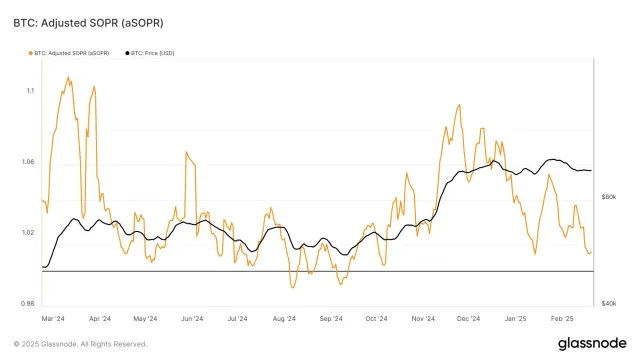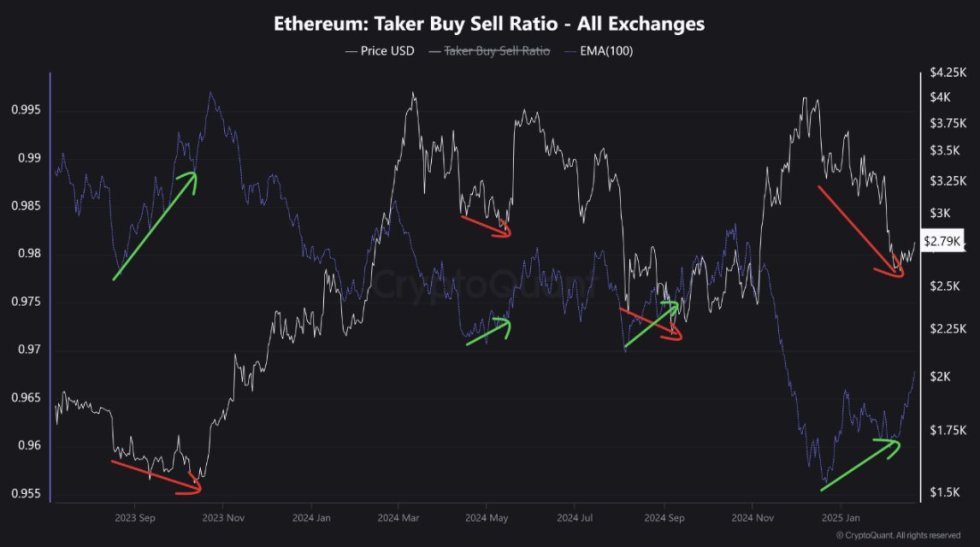Hackers are becoming more sophisticated and employ different tactics to deceive investors. A method that is becoming increasingly popular is a malicious airdrop.
Initially, it was believed Uniswap's protocols were exploited. It was later determined that a phishing attack drained approximately $8 million out of Uniswap's liquidity providers.
Uniswap is a popular decentralized exchange (DEX) for Ethereum including tokens on the ETH mainnet.
How the Phishing Attack Starts?
In the first stage, the bad actor hits the explorers index so the 'From' address appears legitimate, 'Uniswap V3: Positions NFT'. This is called an event pollution attack.
Tokens are sent from the bad actor to numerous addresses. Investors that receive the tokens are curious why 'Uniswap' send them tokens. When checking the token's name the investors are led to the following website: uniswaplp.com (do not visit).
Upon visiting the website, the following message is displayed:
"Liquidity provider rewards At 14:00 UTC, July 11, 2022, Uniswap distributed the UniswapLP tokens, based on the provided liquidity, to the existing UNI-V3 liquidity providers.
"If you have received the UniswapLP tokens, then you are eligible to claim the UNI tokens from this page by clicking on the below button."
As the investors already have received tokens from 'Uniswap' and that only 10k UNI will be airdropped, if claiming is not done immediately there is a risk of the investors missing a portion from the 10,000 UNI.
Employing fear of missing out (FOMO) plays a major role in luring investors into the trap. Upon clicking on the document, a call is made to ethall().
The user's browser info and wallet address are sent to /66312712367123.com.
It may then ask the user to send the tokens to their ETH address. Upon doing so, the bad actor gains full access to the victim's address and drains the account.
The above findings were reported by Harry Denley.
The bad actor sent the 'uniswap' tokens to over 70,000 addresses, spending a substantial amount (over 8 ethers) on gas fees. Among the targeted addresses were large ETH holders.
source: Twitter
The vast majority of crypto investors are aware of these scams. However, many are caught off guard if they do not pay full attention to the information in from of them.
The bad actor already commenced laundering the stolen ethers via Tornado Cash, sending 100 ETH per transaction to the mixer.
How to Defend against Similar Attacks?
There are several methods that can be adopted that may reduce the odds of becoming a phishing attack victim in the crypto space. Airdrops must be verified through the project's social media channels.
It may be Twitter, Telegram or Discord etc. If we take a scenario where the project's social media accounts are compromised, which has occurred in the past, paying attention to the permissions that are given upon interacting with the contract including the web address may help.
Another method, which is fairly new is using Forta, which offers real-time security. Forta's threat detection kit may be used for threat detections in NFTs, stablecoins, bridges and more.
ZenGo wallet has a feature called ClearSign that verifies interactions with contracts. As attacks are becoming more sophisticated, it is essential to take the required time to investigate the legitimacy of what you receive including in emails.
Hackers are becoming more sophisticated and employ different tactics to deceive investors. A method that is becoming increasingly popular is a malicious airdrop.
Initially, it was believed Uniswap's protocols were exploited. It was later determined that a phishing attack drained approximately $8 million out of Uniswap's liquidity providers.
Uniswap is a popular decentralized exchange (DEX) for Ethereum including tokens on the ETH mainnet.
How the Phishing Attack Starts?
In the first stage, the bad actor hits the explorers index so the 'From' address appears legitimate, 'Uniswap V3: Positions NFT'. This is called an event pollution attack.
Tokens are sent from the bad actor to numerous addresses. Investors that receive the tokens are curious why 'Uniswap' send them tokens. When checking the token's name the investors are led to the following website: uniswaplp.com (do not visit).
The LP that follows Uniswap in the url stands for liquidity Liquidity The term liquidity refers to the process, speed, and ease of which a given asset or security can be converted into cash. Notably, liquidity surmises a retention in market price, with the most liquid assets representing cash. The most liquid asset of all is cash itself. · In economics, liquidity is defined by how efficiently and quickly an asset can be converted into usable cash without materially affecting its market price. · Nothing is more liquid than cash, while other assets represent varying degrees of liquidity. This can be differentiated as market liquidity or accounting liquidity.· Liquidity refers to a tangible construct that can be measures. The most common ways to do so include a current ratio, quick ratio, and cash ratio. What is the Definition of Liquidity? Liquidity is a common definition used in investing, banking, or the financial services space. Its primary function is to ascertain how quickly a given asset can be bought, sold, or exchanged without a disparity in market price. Which of the following assets is the most liquid? By definition, in terms of liquidity, cash is unequivocally seen as the most liquid asset in an economic sense. This is due to its widespread acceptance and ease of conversion into other assets, forms of cash, or currencies, etc. All other liquid assets must be able to be quickly and efficiently converted into cash, i.e., financial liquidity. This includes such things as stocks, commodities, or virtually any other construct that has an associated value. By extension, illiquid or non-liquid assets are not able to be quickly converted into cash. These assets, also known as tangible assets, can include such things as rare art or collectables, real estate, etc. Liquidity Spectrum Liquid assets can be defined primarily as either cash on hand or simply an asset that can be easily or readily converted into usable cash. It is important to note that cash is not uniformly liquid for several reasons. The below examples encompass all types of assets and their corresponding level of liquidity. Examples of Liquid Assets or Securities A good example of this is the US dollar, which is recognized or accepted globally, and backed by the US government or Federal Reserve Bank. Other major forms of cash include Euros, or major currencies. This differs notably from the legal tender in many emerging countries or others for political or economic reasons. Cash aside, assets such as stocks or equities, bonds and other securities, money market assets, marketable securities, US treasuries or T-notes, exchange-traded funds (ETFs), a savings account, and mutual funds serve as the most liquid assets. These are generally assumed to be quick assets. Each of these assets can be converted into cash either instantaneously, or via any brokerage platform, exchange, etc., often in as little as minutes or seconds. As such, these assets are liquid. Examples of Illiquid Assets or Securities Conversely, illiquid assets still retain importance and value, though are much more difficult to convert into cash. Common examples of this include land or real estate, intellectual property, or other forms of capital such as equipment or machinery. In the examples above, liquid assets are assumed to be convertible into cash without substantial fees or delays in time. Illiquid assets on the other hand often suffer from fees or additional conversion costs, processing times, ultimately creating a price disparity. The best example of an illiquid asset is a house. For many individuals this is the most valuable asset they will own in their entire lives. However, selling a house typically requires taxes, realtor fees, and other costs, in addition to time. Real estate or land also takes much longer to exchange into cash, relative to other assets. Types of Liquidity Overall, liquidity is a broad term that needs to be defined by two different measures: market liquidity and accounting liquidity. Both measures deal with different constructs or entities entirely, though are useful metrics with regards to individuals or financial markets. Market Liquidity Market liquidity is a broader term that is used by a market maker to measure the ease of which assets can be bought and sold at transparent prices, namely across exchanges, stock markets, or other financial sectors. This can include among others, a real estate or property market, market for fine arts and collectable, and other goods. Market Liquidity Example As mentioned above, certain financial markets are much more liquid than others. The degree to which stocks from large companies or foreign currencies can be exchanged is much easier than finding a readily available market for antiques, collectables, or other capital, regardless of utility. Overall, a stock market, financial brokerage, or exchange is considered to have the high market liquidity. This is because the difference between both the bid and ask prices between parties is very low. The lower the spread between these two prices, the more liquid a given market is. Additionally, low liquidity refers to a higher spread between two prices. Why Liquidity Varies and What Does Liquidity Mean in Stocks? Every asset has a variable level of liquidity meaning this can change depending on what is being analyzed. One can define liquidity in stocks or stock markets in the same way as in foreign exchange markets, brokers, commodities exchanges, and crypto exchanges. Additionally, how large the market is will also dictate liquidity. The foreign exchange market for example is currently the largest by trading volume with high liquidity due to cash flows. This is hardly surprising given that forms of cash or currencies are being exchanged. What is Liquidity in Stocks? A stock's liquidity refers to how rapidly shares of a stock can be bought or sold without largely impacting a stock price. By definition, liquidity in stocks varies for a number of reasons. Stocks with low liquidity may be difficult to sell and may cause you to take a bigger loss if you cannot sell the shares when you want to. In finance, the most liquid assets are always the most popular. By extension, if a spread between buyers and sellers increases, the market is considered to be less liquid. A good example of this is the real estate or property market. While highly valuable, there are large disparities between the purchase price and selling price of property, as well as the time associated in making these transactions, and additional fees incurred by other parties. Liquidity providers play a key role in this regard. Accounting Liquidity Unlike market liquidity, accounting liquidity measures something different entirely. Accounting liquidity is a measure by which either an individual or entity can meet their respective current financial obligations with the current liquid assets available to them. This includes paying off debts, overhead, or any other fixed costs associated with a business. Accounting liquidity is a functional comparison between one’s current liquid assets and their current liabilities. In the United States and other countries, companies and individuals have to reconcile accounting on a yearly basis. Accounting liquidity is an excellent measure that captures financial obligations due in a year. Accounting Liquidity Example Accounting liquidity itself can be differentiated by several ratios, controlling for how liquid assets are. These measures are useful tools for not just the individual or company in focus but for others that are trying to ascertain current financial health.As an example, accounting liquidity can measure any company’s current financial assets and compare them to its financial obligations. If there is a large disparity between these figures, or much more assets than obligations, a company can be considered to have a strong depth of liquidity.How to Calculate Liquidity Liquidity is of importance to investors, financial market participants, analysts, or even for an investment strategy. Calculating liquidity is a measure of firm or individual’s ability to utilize or harness current liquid assets to current cover short-term debt. This can be achieved using a total of four formulas: the current ratio, quick ratio, acid-test variation, and cash ratio. Current Ratio The current ratio is the easiest measure due to its lack of complexity. Quite simply, the current ratio measures a firm or individual’s current assets or those than can be sold within a calendar year, weighed against all current liabilities. Current Ratio = Current Assets/Current Liabilities If the current ratio’s value is greater than 1, then the entity in question can be assumed to reconcile its financial obligations using its current liquid assets. Highly liquid assets will correspond to higher numbers in this regard. Conversely, any number less than 1 indicates that current liquid assets are not enough to cover short-term obligations. Quick Ratio A quick ratio is a slightly more complex way of measuring accounting liquidity via a balance sheet. Unlike the current ratio, the quick ratio excludes current assets that are not as liquid as cash, cash equivalents, or other shorter-term investments. The quick ratio can be defined below by the following: Quick Ratio = (Cash or Cash Equivalents + Shorter-Term Investments + Accounts Receivable)/Current Liabilities Acid-Test Ratio The acid-test ratio is a variation of the quick ratio. The acid-test ratio seeks to deduct inventory from current assets, serving as a traditionally broader measure that is more forgiving to individuals or entities. Acid-Test Ratio = (Current Assets – Inventories – Prepaid Costs)/Current Liabilities Cash Ratio Finally, the cash ratio further isolates current assets, looking to measure only liquid assets that are designated as cash or cash equivalents. In this sense, the cash ratio is the most precise of the other liquidity ratios, excluding accounts receivable, inventories, or other assets. A more precise measure has its uses, namely regarding assessing financial strength in the face of an emergency, i.e., an unforeseen and time sensitive event. The cash ratio can help measure an entity or individual’s hypothesized solvency in the face of unexpected scenarios, events, etc. As such, the cash ratio is defined below: Cash Ratio = Cash and Cash Equivalents/Current Liabilities The cash ratio is not simply a doomsday tool but a highly practical measure when determining market value. In the financial services space, even large companies or profitable institutions can find themselves at liquidity risk due to unexpected events beyond their control. Why is Liquidity Important and Why it Matters to You? Liquidity is very important for not just financial markets but for individuals and investors. Liquid markets benefit all market participants and make it easier to buy and sell securities, stocks, collectables, etc. On an individual level, this is important for personal finance, as ordinary investors are able to better take advantage of trading opportunities. Additionally, high liquidity promotes financial health in companies in the same way it does for individuals. Conclusion – What Does Liquidity Mean? What is liquidity? This metric is a commonly used as a measure in the investing, banking, or financial services space. Liquidity determines how quickly a given asset can be bought, sold, or exchanged without a disparity in market price. Which of the following assets is the most liquid? – cash, stocks, real estate. Of all assets, cash or money is the most liquid, meaning it is the easiest to utilize. All other liquid assets must be able to be quickly and efficiently converted into cash. This includes such things as stocks, commodities, or virtually any other construct that has an associated value. Conversely, illiquid or non-liquid assets are not able to be quickly converted into cash. These assets, also known as tangible assets, can include such things as rare art or collectables, real estate, etc. Frequently Asked Questions About Liquidity Is Liquidity Good or Bad? The term liquidity refers to a measure and is neither good nor bad but is instead a metric of how convertible an asset is to cash. However, high liquidity is associated with lower risk, while a liquid stock is more likely to keep its value when being traded.Is a Home a Liquid Asset? A home or properly is not considered to be a liquid asset. Selling any property can incur additional costs and take a long amount of time. Additionally, there is often a price disparity from the time of purchase, meaning a seller may not even get its original market value back at the time of the sale. Why Are Stocks Liquid? Stocks are some of the most liquid assets in financial markets because these assets can be converted to cash in a short period of time in the event of any financial emergency. Is Tesla a Liquid Stock? Tesla is a liquid stock and while hugely volatile, is an integral part of the NASDAQ and is a globally recognized company. Additionally, the company is a popular single-stock CFD offering at many brokerages, with very high volumes. Is a Pension a Liquid Asset? Certain pensions are liquid assets once you have reached a retirement age. Until you are eligible to withdraw or collect a pension, without early withdrawal penalty, it is not considered a liquid asset. The term liquidity refers to the process, speed, and ease of which a given asset or security can be converted into cash. Notably, liquidity surmises a retention in market price, with the most liquid assets representing cash. The most liquid asset of all is cash itself. · In economics, liquidity is defined by how efficiently and quickly an asset can be converted into usable cash without materially affecting its market price. · Nothing is more liquid than cash, while other assets represent varying degrees of liquidity. This can be differentiated as market liquidity or accounting liquidity.· Liquidity refers to a tangible construct that can be measures. The most common ways to do so include a current ratio, quick ratio, and cash ratio. What is the Definition of Liquidity? Liquidity is a common definition used in investing, banking, or the financial services space. Its primary function is to ascertain how quickly a given asset can be bought, sold, or exchanged without a disparity in market price. Which of the following assets is the most liquid? By definition, in terms of liquidity, cash is unequivocally seen as the most liquid asset in an economic sense. This is due to its widespread acceptance and ease of conversion into other assets, forms of cash, or currencies, etc. All other liquid assets must be able to be quickly and efficiently converted into cash, i.e., financial liquidity. This includes such things as stocks, commodities, or virtually any other construct that has an associated value. By extension, illiquid or non-liquid assets are not able to be quickly converted into cash. These assets, also known as tangible assets, can include such things as rare art or collectables, real estate, etc. Liquidity Spectrum Liquid assets can be defined primarily as either cash on hand or simply an asset that can be easily or readily converted into usable cash. It is important to note that cash is not uniformly liquid for several reasons. The below examples encompass all types of assets and their corresponding level of liquidity. Examples of Liquid Assets or Securities A good example of this is the US dollar, which is recognized or accepted globally, and backed by the US government or Federal Reserve Bank. Other major forms of cash include Euros, or major currencies. This differs notably from the legal tender in many emerging countries or others for political or economic reasons. Cash aside, assets such as stocks or equities, bonds and other securities, money market assets, marketable securities, US treasuries or T-notes, exchange-traded funds (ETFs), a savings account, and mutual funds serve as the most liquid assets. These are generally assumed to be quick assets. Each of these assets can be converted into cash either instantaneously, or via any brokerage platform, exchange, etc., often in as little as minutes or seconds. As such, these assets are liquid. Examples of Illiquid Assets or Securities Conversely, illiquid assets still retain importance and value, though are much more difficult to convert into cash. Common examples of this include land or real estate, intellectual property, or other forms of capital such as equipment or machinery. In the examples above, liquid assets are assumed to be convertible into cash without substantial fees or delays in time. Illiquid assets on the other hand often suffer from fees or additional conversion costs, processing times, ultimately creating a price disparity. The best example of an illiquid asset is a house. For many individuals this is the most valuable asset they will own in their entire lives. However, selling a house typically requires taxes, realtor fees, and other costs, in addition to time. Real estate or land also takes much longer to exchange into cash, relative to other assets. Types of Liquidity Overall, liquidity is a broad term that needs to be defined by two different measures: market liquidity and accounting liquidity. Both measures deal with different constructs or entities entirely, though are useful metrics with regards to individuals or financial markets. Market Liquidity Market liquidity is a broader term that is used by a market maker to measure the ease of which assets can be bought and sold at transparent prices, namely across exchanges, stock markets, or other financial sectors. This can include among others, a real estate or property market, market for fine arts and collectable, and other goods. Market Liquidity Example As mentioned above, certain financial markets are much more liquid than others. The degree to which stocks from large companies or foreign currencies can be exchanged is much easier than finding a readily available market for antiques, collectables, or other capital, regardless of utility. Overall, a stock market, financial brokerage, or exchange is considered to have the high market liquidity. This is because the difference between both the bid and ask prices between parties is very low. The lower the spread between these two prices, the more liquid a given market is. Additionally, low liquidity refers to a higher spread between two prices. Why Liquidity Varies and What Does Liquidity Mean in Stocks? Every asset has a variable level of liquidity meaning this can change depending on what is being analyzed. One can define liquidity in stocks or stock markets in the same way as in foreign exchange markets, brokers, commodities exchanges, and crypto exchanges. Additionally, how large the market is will also dictate liquidity. The foreign exchange market for example is currently the largest by trading volume with high liquidity due to cash flows. This is hardly surprising given that forms of cash or currencies are being exchanged. What is Liquidity in Stocks? A stock's liquidity refers to how rapidly shares of a stock can be bought or sold without largely impacting a stock price. By definition, liquidity in stocks varies for a number of reasons. Stocks with low liquidity may be difficult to sell and may cause you to take a bigger loss if you cannot sell the shares when you want to. In finance, the most liquid assets are always the most popular. By extension, if a spread between buyers and sellers increases, the market is considered to be less liquid. A good example of this is the real estate or property market. While highly valuable, there are large disparities between the purchase price and selling price of property, as well as the time associated in making these transactions, and additional fees incurred by other parties. Liquidity providers play a key role in this regard. Accounting Liquidity Unlike market liquidity, accounting liquidity measures something different entirely. Accounting liquidity is a measure by which either an individual or entity can meet their respective current financial obligations with the current liquid assets available to them. This includes paying off debts, overhead, or any other fixed costs associated with a business. Accounting liquidity is a functional comparison between one’s current liquid assets and their current liabilities. In the United States and other countries, companies and individuals have to reconcile accounting on a yearly basis. Accounting liquidity is an excellent measure that captures financial obligations due in a year. Accounting Liquidity Example Accounting liquidity itself can be differentiated by several ratios, controlling for how liquid assets are. These measures are useful tools for not just the individual or company in focus but for others that are trying to ascertain current financial health.As an example, accounting liquidity can measure any company’s current financial assets and compare them to its financial obligations. If there is a large disparity between these figures, or much more assets than obligations, a company can be considered to have a strong depth of liquidity.How to Calculate Liquidity Liquidity is of importance to investors, financial market participants, analysts, or even for an investment strategy. Calculating liquidity is a measure of firm or individual’s ability to utilize or harness current liquid assets to current cover short-term debt. This can be achieved using a total of four formulas: the current ratio, quick ratio, acid-test variation, and cash ratio. Current Ratio The current ratio is the easiest measure due to its lack of complexity. Quite simply, the current ratio measures a firm or individual’s current assets or those than can be sold within a calendar year, weighed against all current liabilities. Current Ratio = Current Assets/Current Liabilities If the current ratio’s value is greater than 1, then the entity in question can be assumed to reconcile its financial obligations using its current liquid assets. Highly liquid assets will correspond to higher numbers in this regard. Conversely, any number less than 1 indicates that current liquid assets are not enough to cover short-term obligations. Quick Ratio A quick ratio is a slightly more complex way of measuring accounting liquidity via a balance sheet. Unlike the current ratio, the quick ratio excludes current assets that are not as liquid as cash, cash equivalents, or other shorter-term investments. The quick ratio can be defined below by the following: Quick Ratio = (Cash or Cash Equivalents + Shorter-Term Investments + Accounts Receivable)/Current Liabilities Acid-Test Ratio The acid-test ratio is a variation of the quick ratio. The acid-test ratio seeks to deduct inventory from current assets, serving as a traditionally broader measure that is more forgiving to individuals or entities. Acid-Test Ratio = (Current Assets – Inventories – Prepaid Costs)/Current Liabilities Cash Ratio Finally, the cash ratio further isolates current assets, looking to measure only liquid assets that are designated as cash or cash equivalents. In this sense, the cash ratio is the most precise of the other liquidity ratios, excluding accounts receivable, inventories, or other assets. A more precise measure has its uses, namely regarding assessing financial strength in the face of an emergency, i.e., an unforeseen and time sensitive event. The cash ratio can help measure an entity or individual’s hypothesized solvency in the face of unexpected scenarios, events, etc. As such, the cash ratio is defined below: Cash Ratio = Cash and Cash Equivalents/Current Liabilities The cash ratio is not simply a doomsday tool but a highly practical measure when determining market value. In the financial services space, even large companies or profitable institutions can find themselves at liquidity risk due to unexpected events beyond their control. Why is Liquidity Important and Why it Matters to You? Liquidity is very important for not just financial markets but for individuals and investors. Liquid markets benefit all market participants and make it easier to buy and sell securities, stocks, collectables, etc. On an individual level, this is important for personal finan You can get bonuses upto $100 FREE BONUS when you:

💰 Install these recommended apps:
💲 SocialGood - 100% Crypto Back on Everyday Shopping
💲 xPortal - The DeFi For The Next Billion
💲 CryptoTab Browser - Lightweight, fast, and ready to mine!
💰 Register on these recommended exchanges:
🟡 Binance🟡 Bitfinex🟡 Bitmart🟡 Bittrex🟡 Bitget
🟡 CoinEx🟡 Crypto.com🟡 Gate.io🟡 Huobi🟡 Kucoin.




















Comments